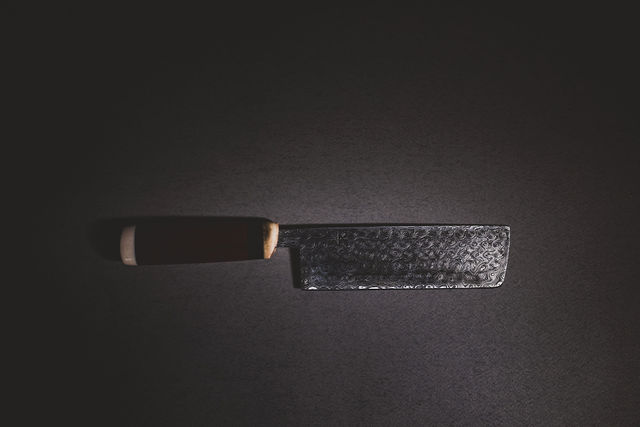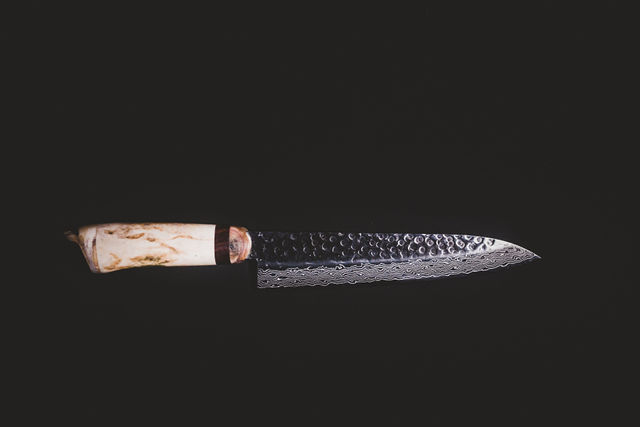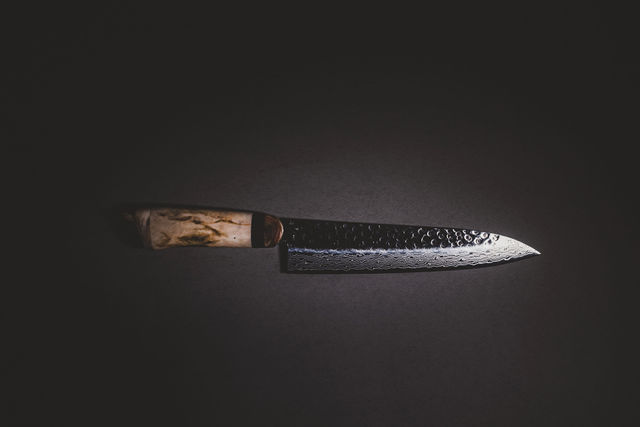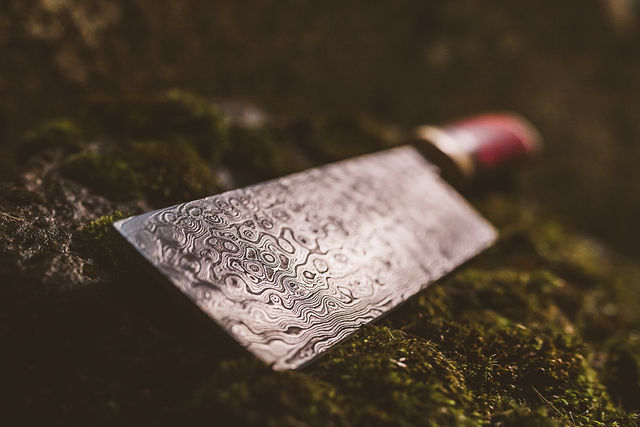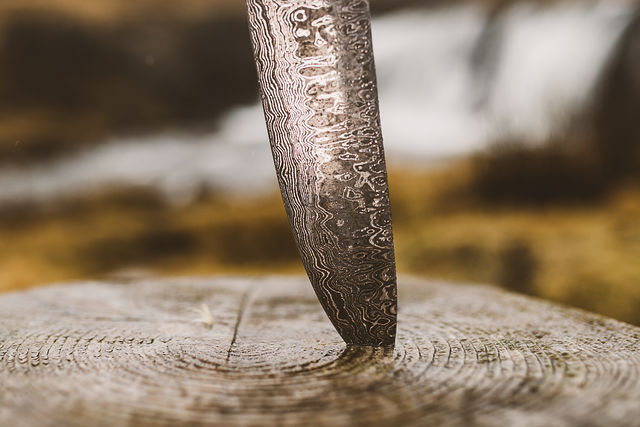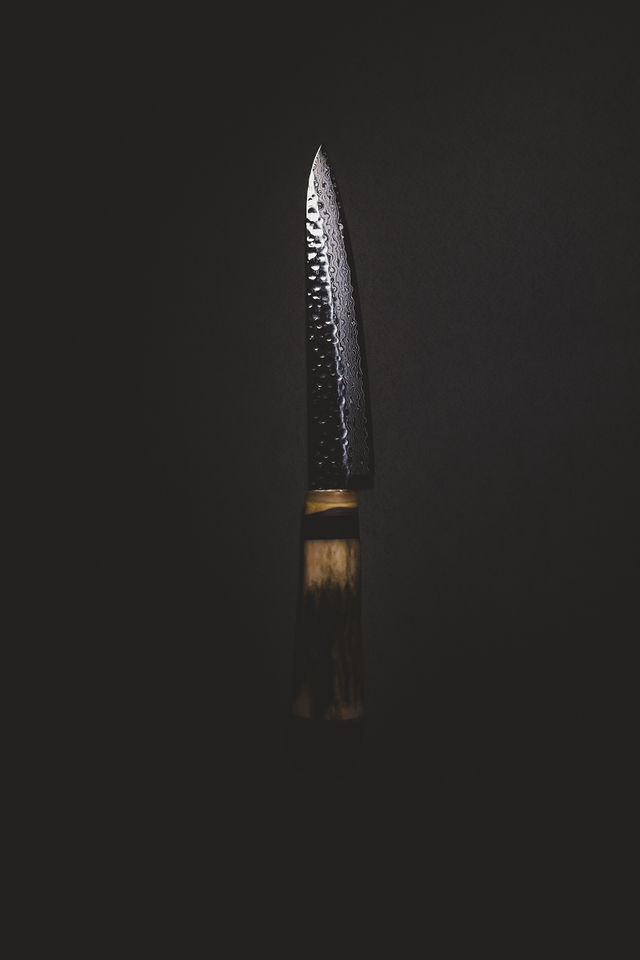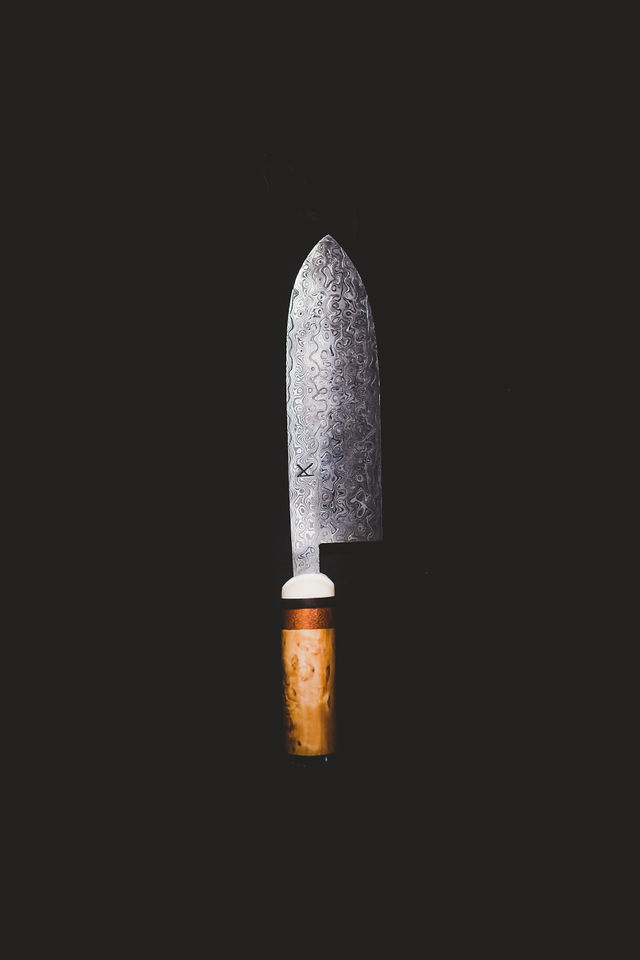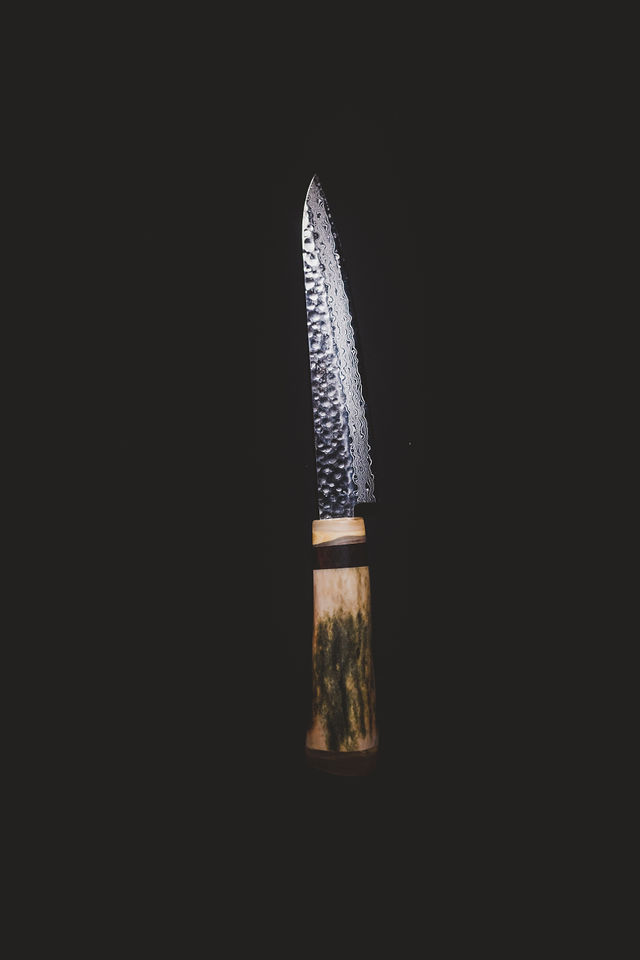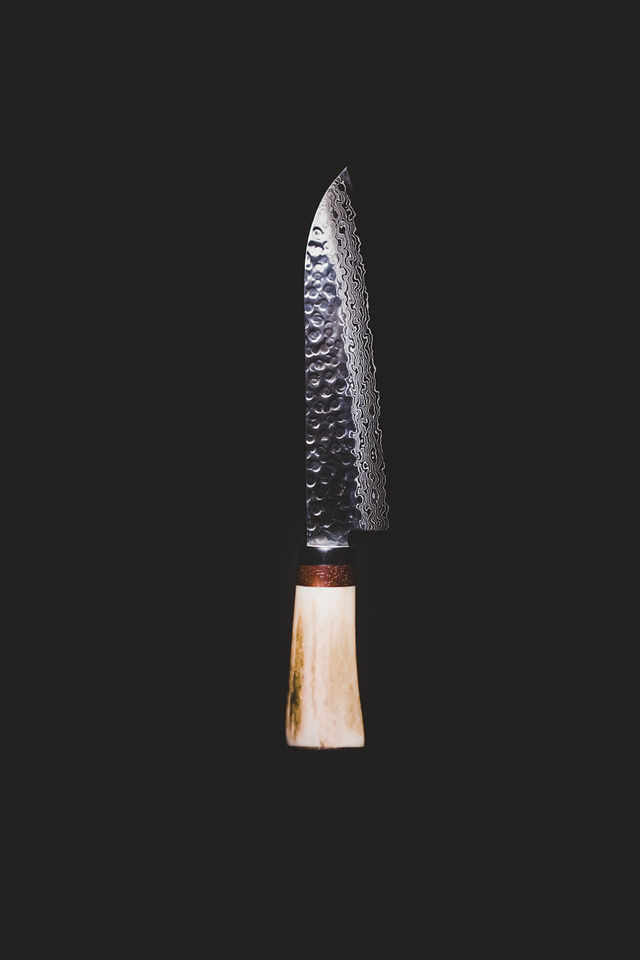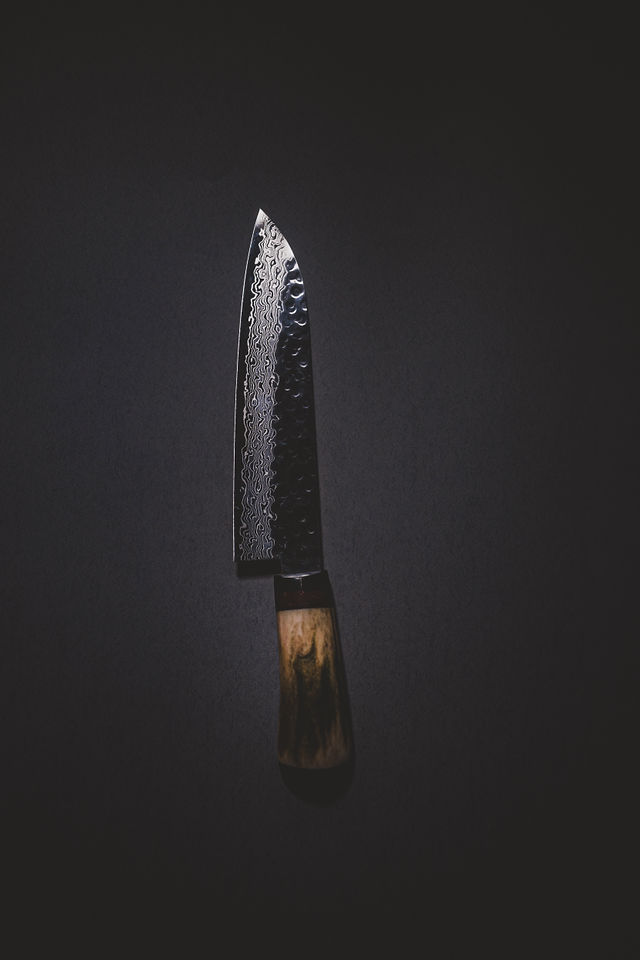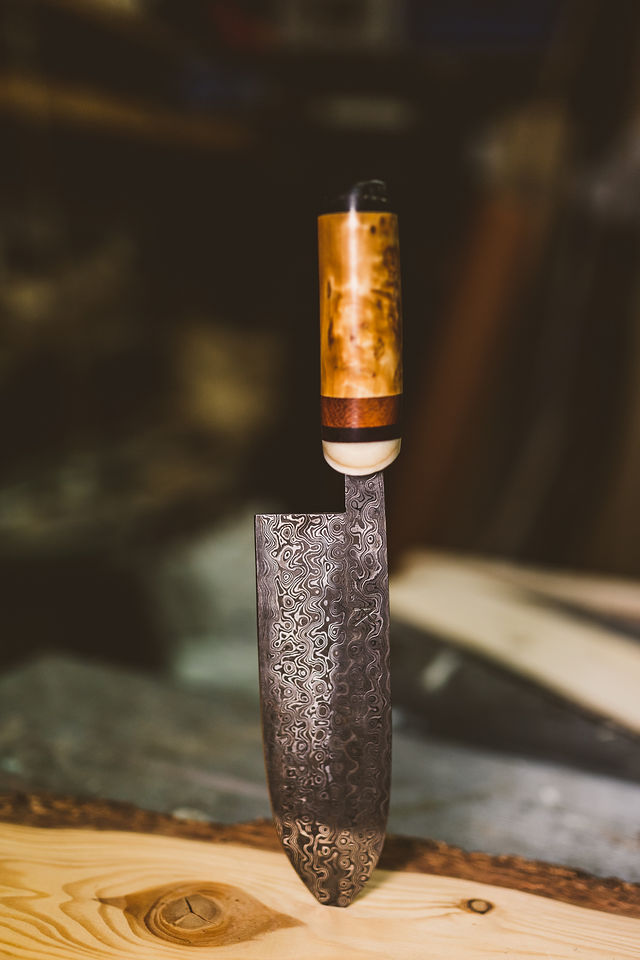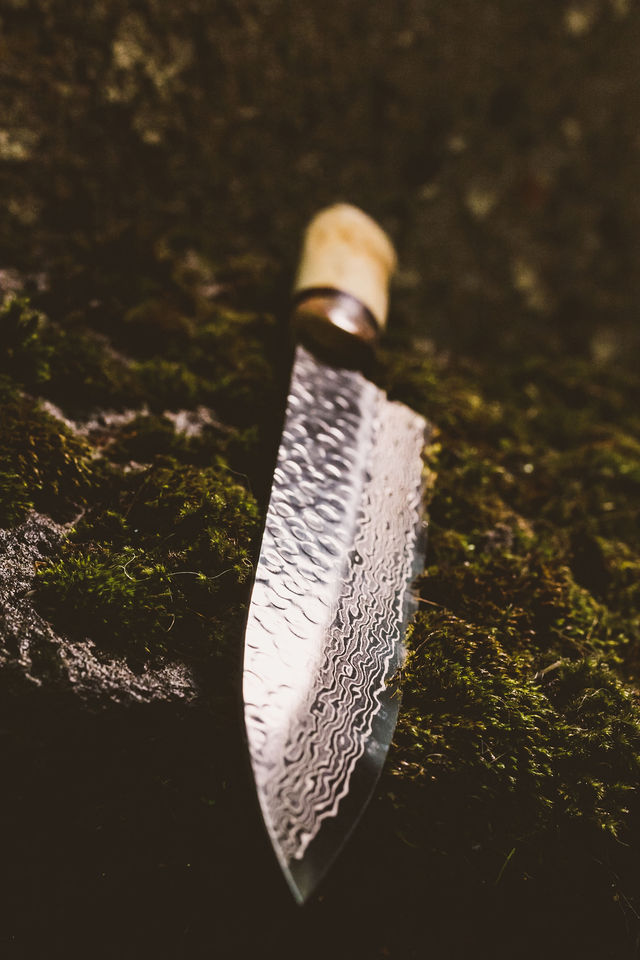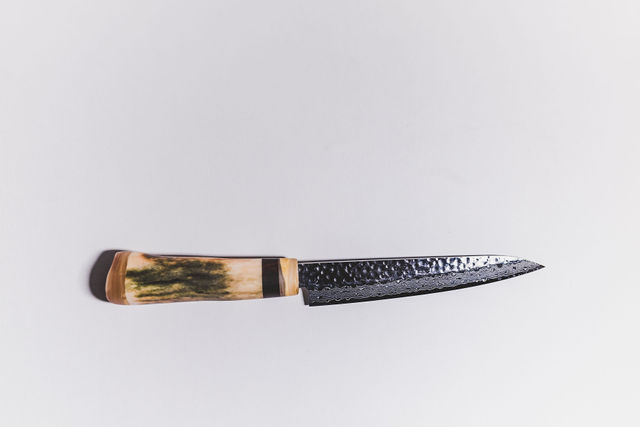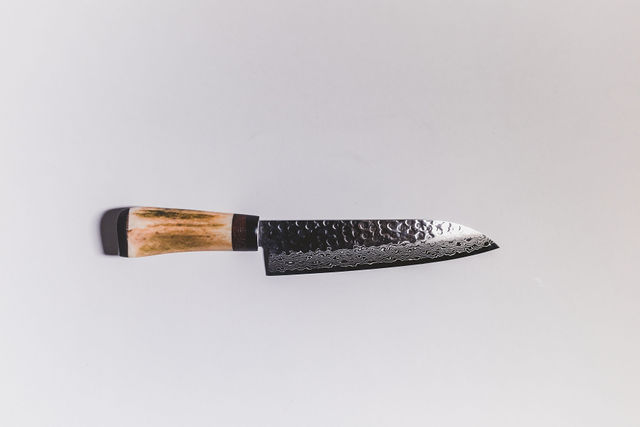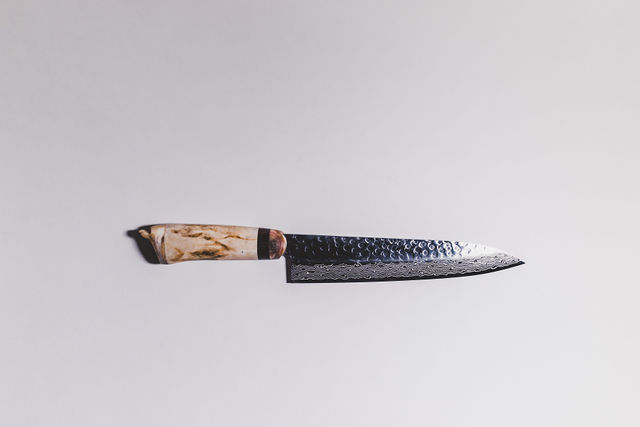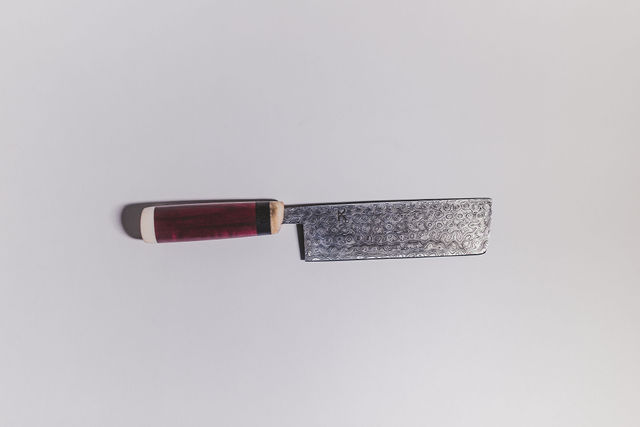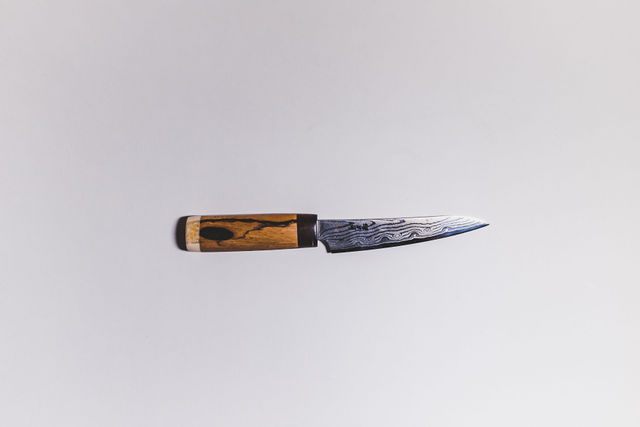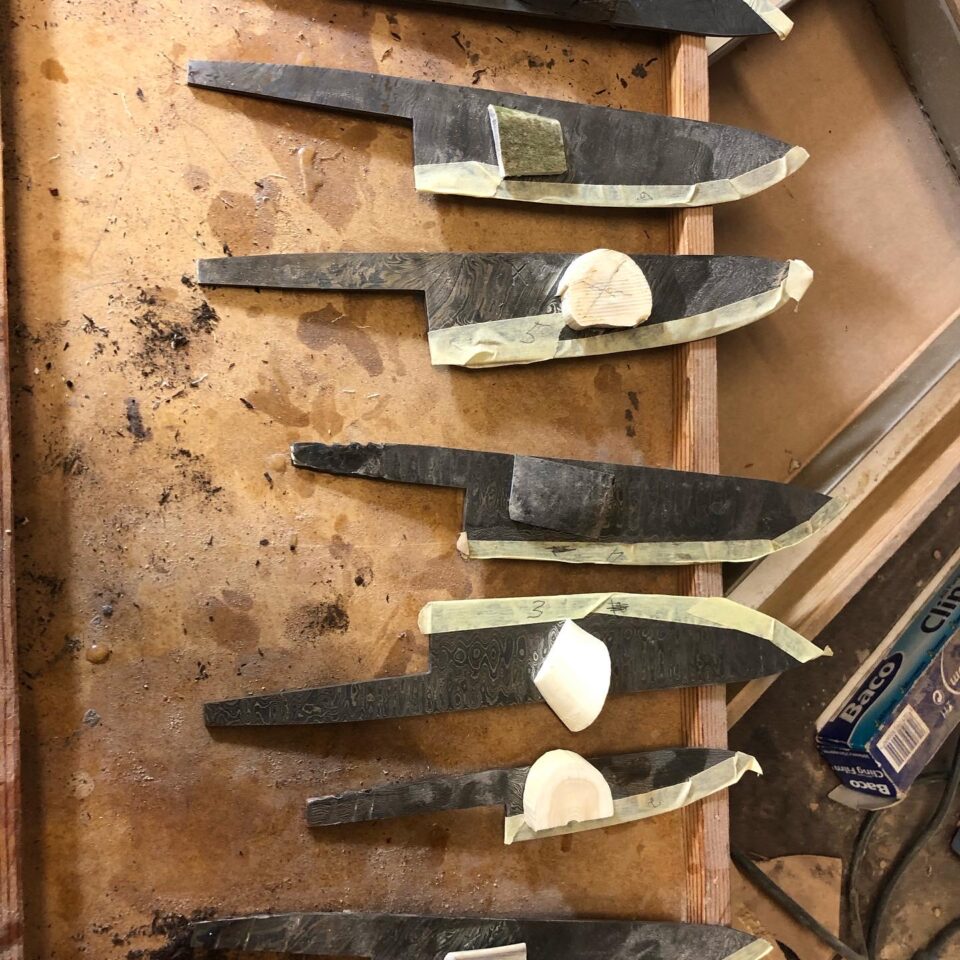ABOUT THE ARTISAN KNIFEMAKER AND THE HANDCRAFTED KITCHEN KNIVES.

The knifemaker has worked on the craft for over 30 years. This artisan views the profession as recycling, transforming lesser-used materials into something beautiful.
The passion for the craft is evident in both the work and the workshop. The workshop is open to the public, allowing visitors to experience a special blend of a museum, studio, and shop all in one space. The rustic setting is filled with intriguing items, such as antlers, hooves, horns, and even teeth. The knifemaker skillfully works with the natural materials found to craft unique handles for the kitchen knives, with each one being distinct.
When not in the workshop, the knifemaker often travels around the country, gathering interesting materials from various parts of the scenic landscapes.
What is the most loved aspect of the knifemaking profession?
“There’s a deep appreciation for working with hands. The chance to earn a living through art and craftsmanship is truly fulfilling. There’s an innate drive to produce something beautiful, be it through painting, crafting, sculpting, or any hands-on activity. Being able to work in a profession that aligns with one’s passion makes each day enjoyable and, often, time seems to fly. Every moment spent in the workshop crafting something new is cherished.”
Are knives’ heritage and historical significance considered in the craft?
“Knives have always been pivotal tools, crucial for the growth and evolution of societies. In modern crafting, there’s a drive to elevate this ancient tool beyond its basic utility. By adding intricate design elements while ensuring functionality, the knife becomes both a work of art and a practical implement. While some craftsmen might prioritize local heritage, emphasizing the use of native materials for handles, it’s essential to see the craft as a reflection of broader cultural influences. The goal is often to encapsulate the beauty and essence of a region in the work and share that representation with a wider audience.”
What distinguishes the materials chosen for this craft, and why is there an emphasis on using natural materials native to the region?
“In the art of knifemaking, there’s a philosophy of recycling and repurposing materials, often salvaging parts from animals like hooves, antlers, and teeth which might otherwise be discarded. This approach gives these materials a renewed purpose, allowing them to become elements of a distinctive, handcrafted piece. When these knives are well-maintained, they not only serve as functional tools but also as timeless artifacts, enhancing the aesthetics of a household for generations.”
What’s a lesser-known aspect of the knifemaking process?
“Many might be surprised to discover the extensive time required to prepare the materials. Achieving uniform humidity levels is critical. For instance, certain woods used can take up to six years to dry. When using hooves, they must be boiled for ten hours, straightened, and then left to dry for approximately one and a half years. Each component of the knife undergoes multiple treatments before it’s ready for final assembly.”
The craftsmanship and the workshop are recognized globally, setting them apart primarily due to their commitment to sustainability. The knifemaker salvages materials from nature that might otherwise be discarded, providing them a renewed purpose. Some of the materials integrated into the creations include birch, rowan, horse hooves, reindeer antlers, sheep horns, and whale teeth. As a result, every knife boasts a unique character. Each knife features blades from Japan, Denmark,Norway, Germany, or Sweden , forged from either handmade Damascus, 3 layers or stainless steel.
These artisan kitchen knives are crafted with top-tier blades, ensuring durability and precision. This workshop holds the distinction of being the sole producer of hand made kitchen knives in Iceland. The knifemaker often draws inspiration from nature and the immediate environment during the crafting process. For instance, a particular color combination was inspired by the rust-red and green algae observed on a ship at the Old Harbour in Reykjavík.
“Sustainability and environmental consciousness are core principles in the knife-making process. No animals are specifically hunted for materials. The ram horns and horse hooves are sourced from animals that have already been slaughtered, while the ivory (teeth) originates from beached whales. When procuring wood, only specially certified companies from the USA are considered, ensuring the wood comes from legally harvested trees. Most often, the wood is sourced from aged trees in Iceland that necessitate removal.”
Visiting the knife-making workshop offers a unique aura of tranquility. It’s evident that every piece crafted there is done with meticulous care. The aromatic blend of various woods and the leather from the sheaths, coupled with the ambient sounds of birdsong and the nearby waterfall, crafts an unparalleled experience—one that is a must-visit for enthusiasts and visitors alike.



